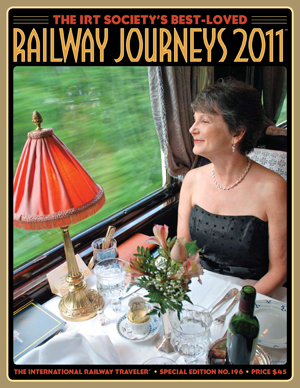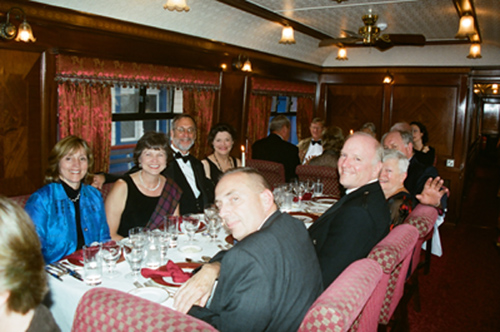Britain Ditches the Dining Car (What’s the World Coming To?)

As I write this, the last patron on a publicly operated British dining car might be enjoying his last bite. Traditional, public dining car service in Britain is over.
“There will be lavish helpings of nostalgia aboard the 19.33 from London’s King’s Cross to Leeds,” said Michael Williams in yesterday’s Daily Mail. No matter. The bean-counters have decided that traditional railway dining cars have no business in Britain. Read Williams’ entire story here.
The news is sad but not surprising, as civilization in general, and public rail travel in particular, continue their downhill slide. True, there still are good meals to be had aboard Germany’s ICEs and in Switzerland’s main-line dining cars. Even Amtrak does its best with what it has. But the trajectory is unmistakable.
Williams quotes a transport analyst, Barry Doe, who claims dining cars could be profitable, if only the suits in accounting would realize the marketing potential of 200 or so hungry, captive customers on an 8-hour train ride.
We’ve certainly tried to do our part. Over the years, The International Railway Traveler has cheered on those brave souls who’ve tried to make dining cars profitable.
There was AB Svenska Orientexpressen, two traditional navy blue restaurant cars named after the owner’s grandmothers, which ran on trains of the Swedish State Railways.
There was McDonald’s brief experience with fast-food cars (complete with Golden Arches) on the railways of Switzerland, of all places.
And — at least until recently — in Capetown, South Africa, Biggsy’s Restaurant Carriage and Wine Bar was attached to the Cape Town-Simon’s Town commuter train.
The ventures failed in Sweden and Switzerland. And just now I tried phoning Biggsy’s, with “number no longer in service” the response (anyone have any info?).

We love dining on the Venice Simplon-Orient-Express, Rovos Rail’s Pride of Africa and the Royal Canadian Pacific. And Britain’s sad news is all the more reason to enjoy the incredible fare on such trains as the British Pullman and the Royal Scotsman.
But the loss of genuine, full-service dining on the public rails brings us a step closer to an alien, digitized, impersonal world.
Or perhaps our readers know of public trains which still offer traditional, civilized dining experiences. If so, please let us know.


